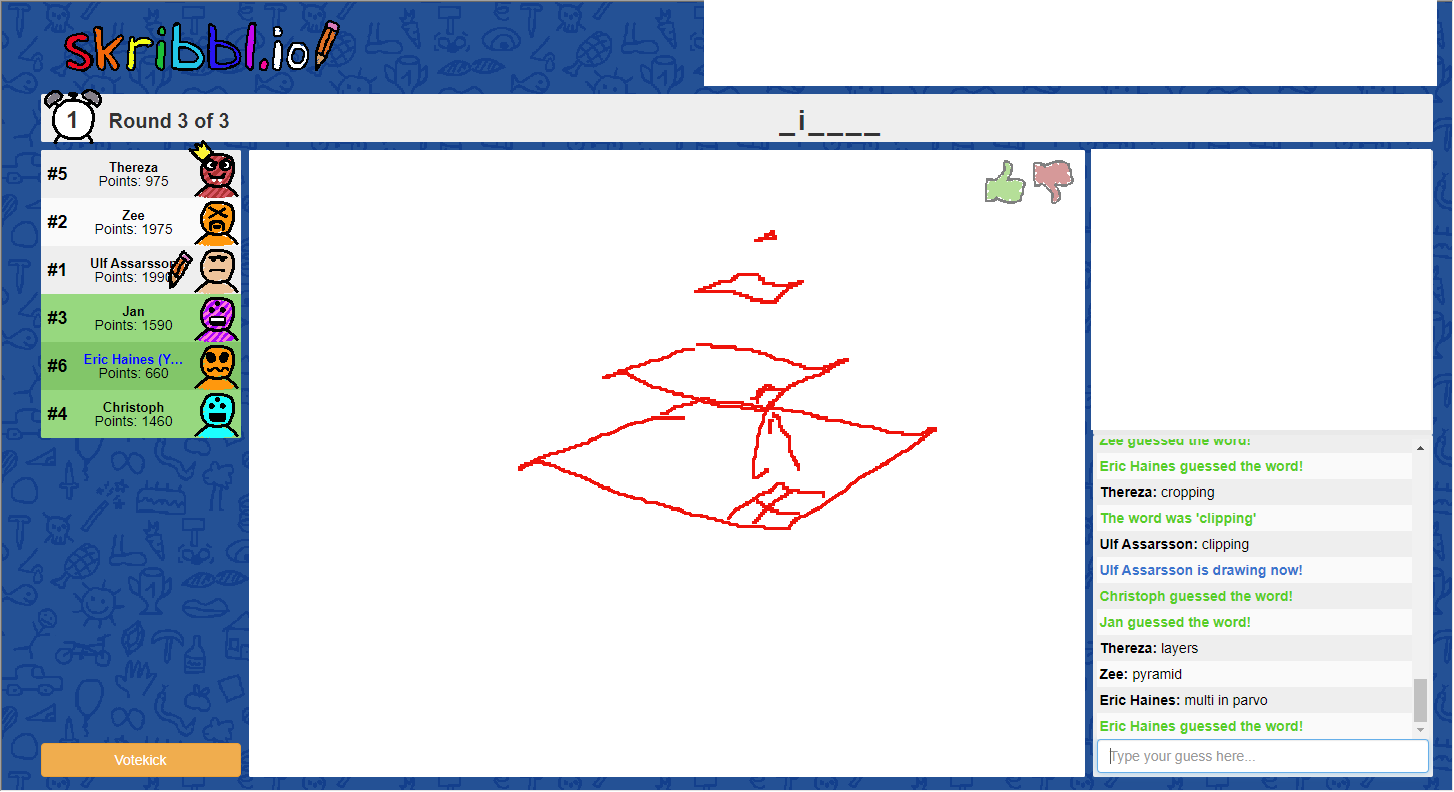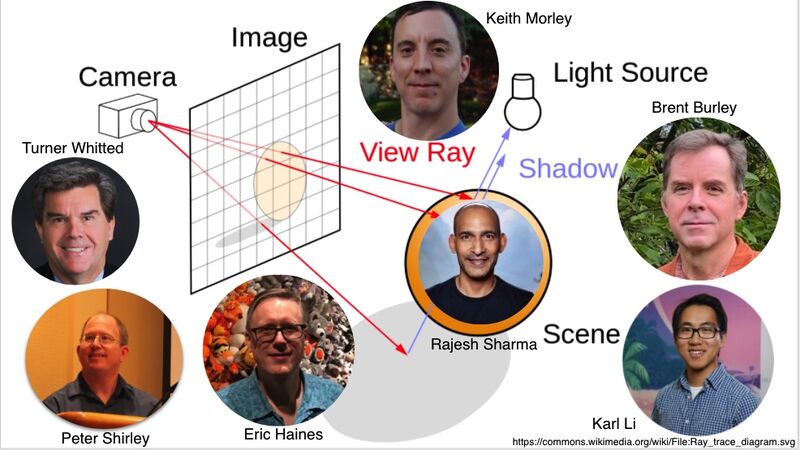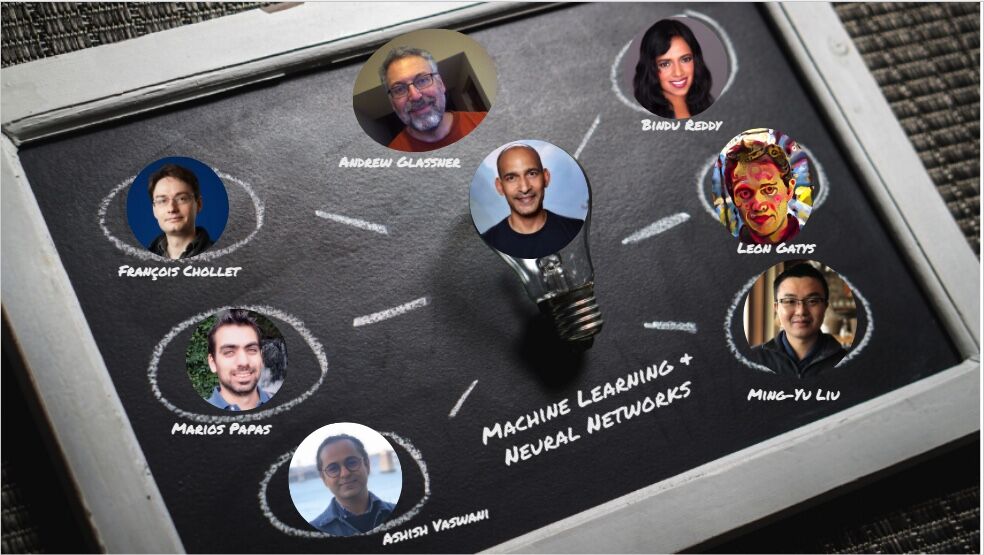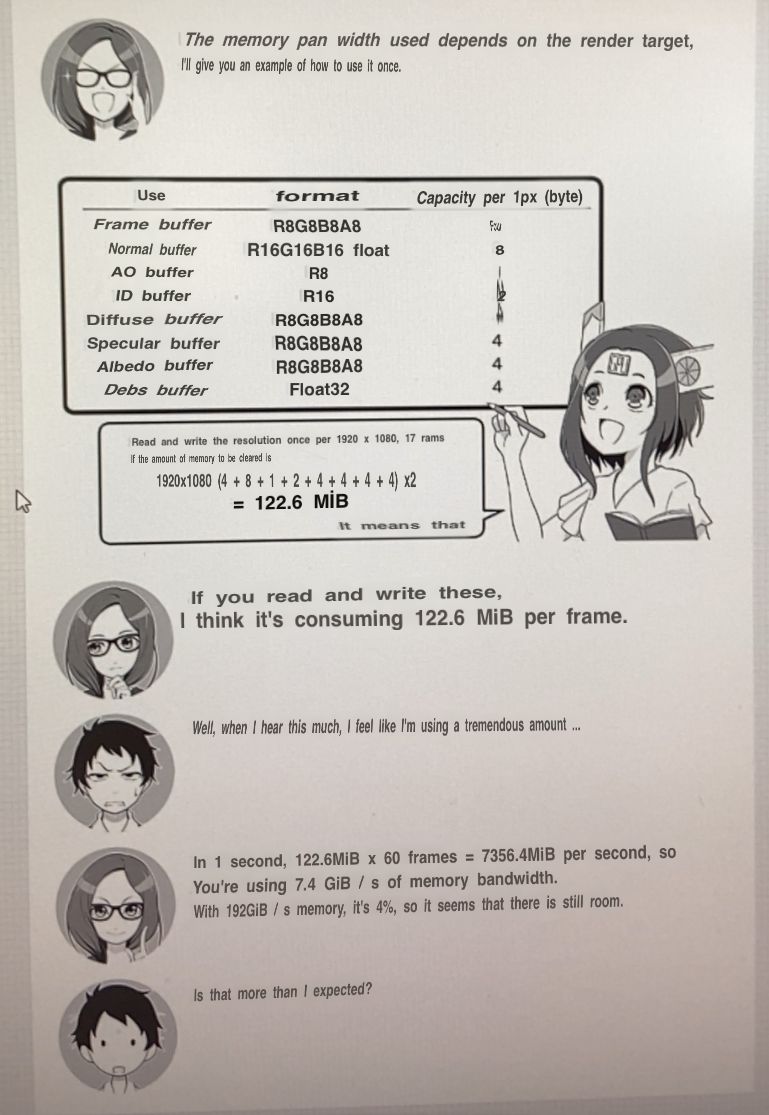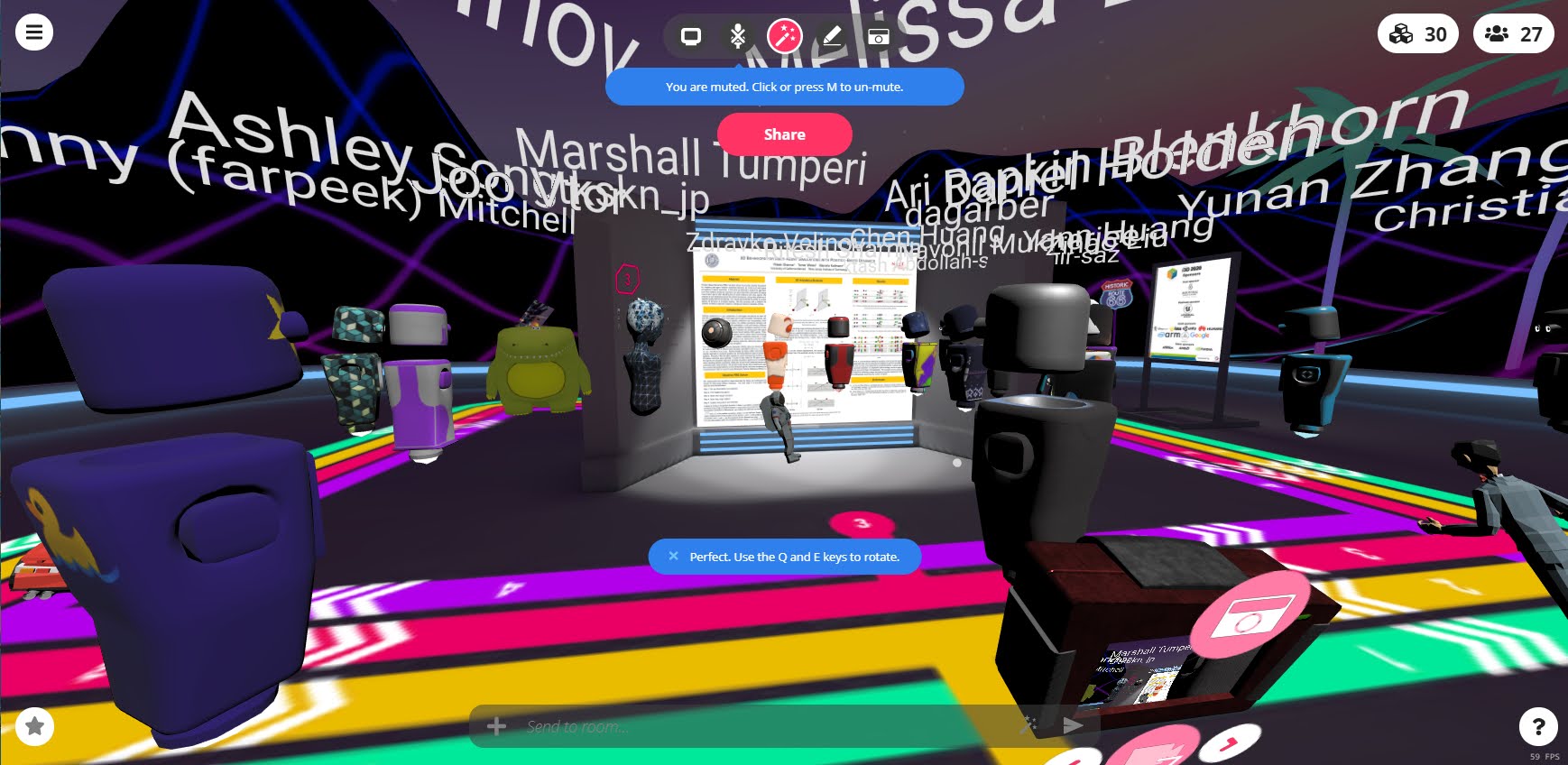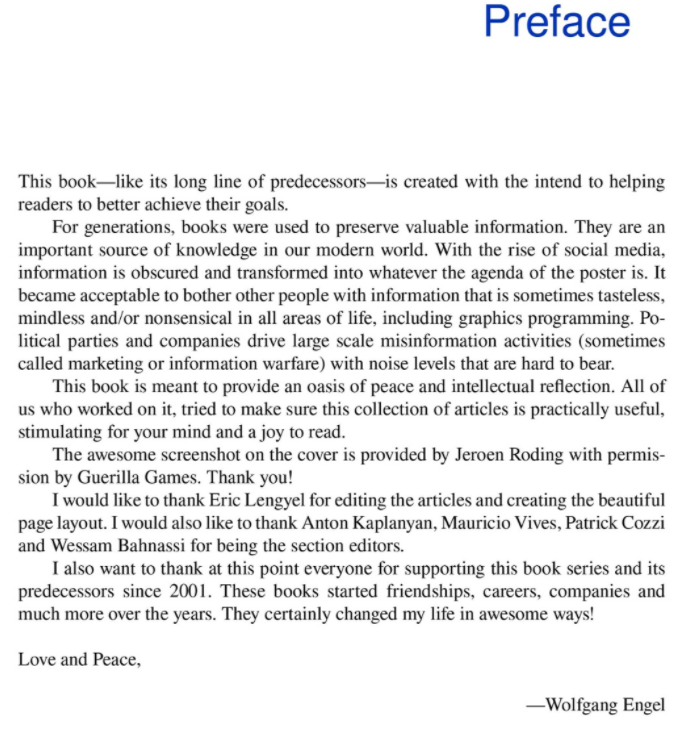One activity we did during Tuesday and Wednesday evenings after I3D sessions ended was to play skribbl.io (essentially, Pictionary) together. Quite fun! It’s maybe not ideal for an international audience, since it involves typing English words, but given that the winners were generally people from non-English-speaking countries, maybe that’s not so limiting. The good bits are that the game’s easy to learn and people can join or quit at any time. It also gets everyone talking and is free. Plus, it’s like 15 minutes or so for a full game, depending on the number of players.
Since I3D is about graphics and interaction, I made a custom list of graphics terms for people to draw. These can be pasted into the program when starting a match. Christoph Peters had this clever idea, but his phrase list on Tuesday was a bit ambitious: all the terms in the index of the PBR book. Turns out there’s a thirty-character limit… The next day I made a list from looking at a 3D graphics glossary and some other sources, culling out ones that seemed way too tough. Using this worked well for the one game we played with it (after a single game you’ll start to get repeats).
Here’s my list to paste in as custom words, most from last night and a few I added just now:
antialiasing, aliasing, alpha channel, ambient light, ambient occlusion, augmented reality, backface culling, baking, billboard, blending, bounding box, bounding volume, bump mapping, BRDF, cache, camera, clipping, collision detection, color bleeding, convolution, Cornell box, cube mapping, decal, deep learning, depth buffer, diffuse, fill rate, filter, fractal, global illumination, graphics processing unit, height field, interpolation, intersection, keyframe, level of detail, lighting, Manhattan distance, marching cubes, mipmap, multiprocessing, noise, particle, path tracing, penumbra, pipeline, point cloud, polygon mesh, post processing, refraction, shader, shadow, skinning, specular highlight, spline, sprite, Stanford bunny, stereo rendering, tangent, texture mapping, transform, transparency, umbra, Utah teapot, view frustum, virtual reality, voxel grid, wavelength, wireframe
Have fun! And good luck drawing “convolution,” that’s there mostly for “are you crazy?” value – you should edit the list as you wish.
A screenshot from last night’s game. My score’s low since I was aiming to give hints (and, yes, it should have been “multum” – didn’t help anyone anyway). If you host the game and provide the list, I recommend you take on this clue-giver role, too. But, type something each drawing, whatever the case. If you don’t make any guesses for a few turns you’ll get autokicked.
